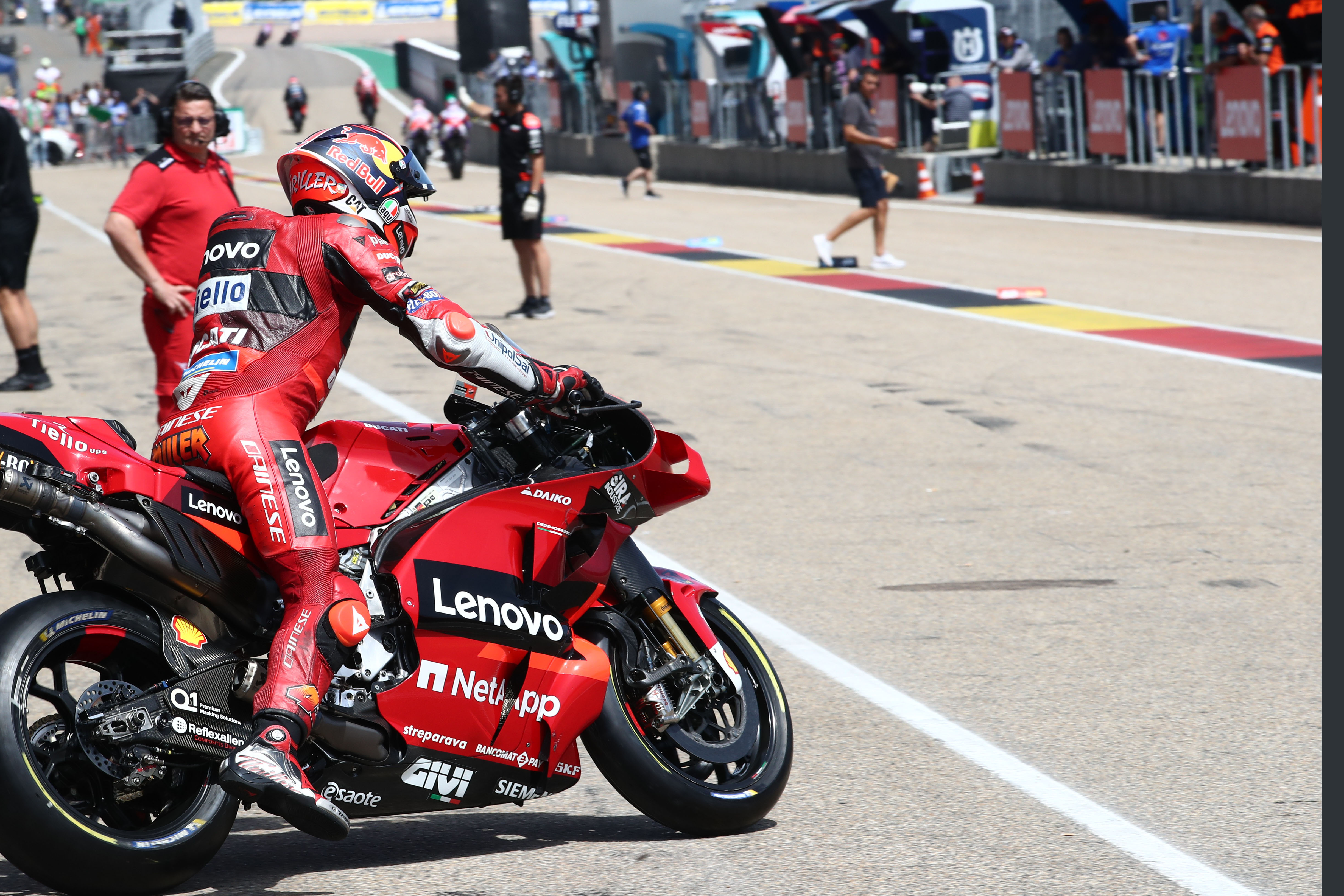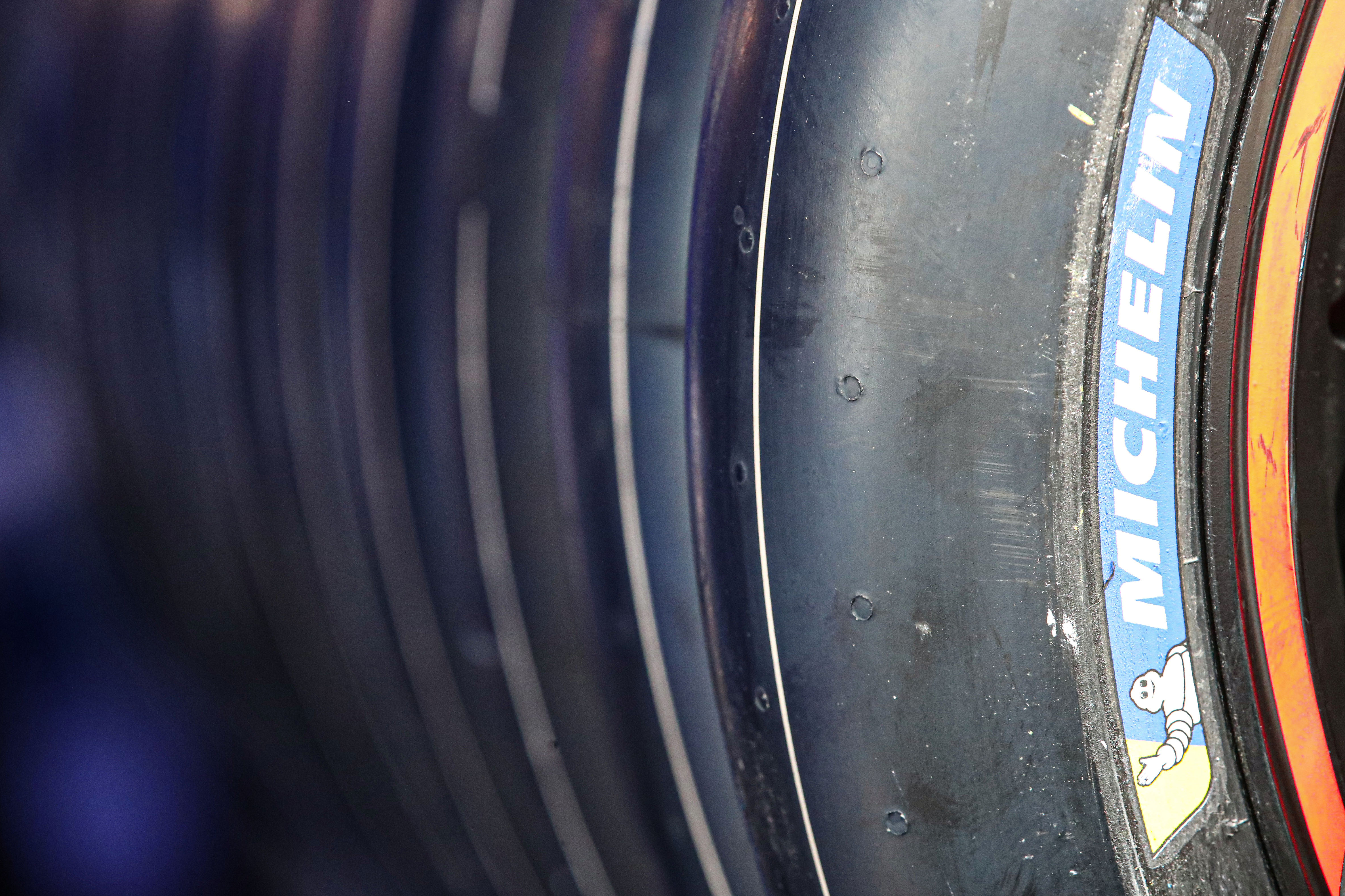until Abu Dhabi Autonomous Racing League

Fresh attention has once again been drawn to MotoGP control tyre manufacturer Michelin’s policy of reissuing preheated (but unused) tyres to teams and riders, after Pol Espargaro crashed heavily at Turn 1 at the Sachsenring during German Grand Prix Friday practice.
The works Honda rider was using one such rear tyre option at the time. It was his second crash at that corner during practice.
A tough day at the office 😓@polespargaro goes down again at turn 1 but is up on his feet 🙌#MotoGP | #GermanGP 🇩🇪 pic.twitter.com/dOmo5bUeQ8
— MotoGP™🏁 (@MotoGP) June 17, 2022
Preheated tyres are an issue that has been raised multiple times in the past by various riders, most recently by 2020 world champion Joan Mir at the start of last year after struggling with them at the season-opening Qatar Grand Prix.
And while Espargaro wasn’t as quick to pin all the blame for the crash onto the issue, he also admitted the entire point of the three-lap run was to remove the tyre from his allocation.
“It was a new hard tyre, one preheated from another race, although we don’t know when,” he explained.
“I wanted to take it out of my allocation so that I didn’t have it in another weekend. I needed to do three laps and I didn’t reach them because I crashed.
“I was very slow, and we don’t really understand why it happened.
“The first crash for sure I was pushing a little bit more and the track wasn’t ready for it, and I made a mistake and crashed.
“But the second one we don’t understand so good.”
Asked by The Race if riders needed to have another conversation with Michelin about the preheated tyres, Espargaro replied: “Yeah, something like that”.
So what exactly is a preheated tyre? Simply put, it’s one that’s been issued to a team in their weekly allocation, heated up to 90ºC using tyre warmers (a process which can change the chemical composition of the rubber), but not fitted to a bike, allowed to cool down, and returned to Michelin for reallocation at a later date.
“It varies depending on how well the teams manage the heating of their allocation but sometimes there are none,” Michelin boss Piero Taramasso initially told The Race when asked for detail on the allocation of preheated tyres.
“As a result we can’t say for each race, plus the information is confidential.
“However, the maximum number they could possibly have for each race weekend is two fronts of each compound and two soft and one medium and one hard rear.
“Each rider gets exactly the same quantity of tyres and in the same compounds.”
Michelin has since clarified, though, that there has in fact been a change in how they allocate tyres to riders for 2022. The previous procedure saw tyres assembled into sets and then assigned to riders by lottery, ensuring fairness in how they were handed out to the whole grid.
This year, however, a new step has been added, and tyres in the assigned set can now be swapped out by Michelin for preheated tyres previously used by that rider, in an attempt to ensure that teams become more responsible about heating tyres they don’t necessarily plan to use. This in turn means that all the preheated tyres in any one rider’s allocation has been preheated by their own team at some point in the past.

Some riders still argue that the tyres become far more unpredictable, and that the teams may have no way of knowing how long or at what temperatures the tyre was heated at, how many times it was allowed to cool down and be reheated, or how long ago the process happened – something that Ducati rider Jack Miller (another, like Espargaro, who is sensitive to the changes) says can make a big difference.
“It’s difficult to say around here,” the Australian when asked by The Race how much of an impact it can make. “But last week, a lot, and we’ll find out about here.
“I had tyres from Valencia last year, both the hard and medium front today were from Valencia last year, but we don’t know whose tyre it was or how much they were preheated.
“I understand that they’re struggling like everyone in the world right now at this point, when we don’t have materials and stuff like that, but that was a strange one for me.”
Not everyone seems to be as sensitive or as affected by the issue as Miller or Espargaro, but the Spanish rider’s older brother Aleix backed up his rivals even while admitting it’s not something he particularly struggles with.
While saying that it’s a frequent cause of concern at the usual Friday night safety commission meetings, he also sees both sides of the story.
“This is a difficult story, and I don’t know what to say,” said the Aprilia rider.
“In my case, I don’t feel a big difference, but Pol is not the only one who struggles.
“A lot of riders actually are very angry with this because they feel it a lot, and in every safety commission we talk about the same.
“But it’s a very difficult situation and I understand it fully. I understand Pol, but what can we do?
“Do we throw away a tyre every time we heat it? 55 tyres every weekend? I don’t have an answer to it.”

And, with both Michelin and MotoGP series promoter Dorna pushing hard to make the championship as sustainable as possible, it’s unlikely there’ll be considerable change around the issue any time soon.
“The rationale is to avoid wasting new or unused tyres,” Taramasso added.
“We ask the teams to try to limit the number of tyres they keep on warmers during a race weekend, but they prefer to heat more than they need, just in case of emergency – and this creates preheated tyres!
“We have done extensive tests on our tyres which have been kept in this preheated state, and these tests show that it does not negatively affect their performance.
“Our technicians carefully monitor and log the time that each individual tyre spends in warmers, and this ensures that none of the tyres is kept on warmers for anywhere near the maximum time limit.”

